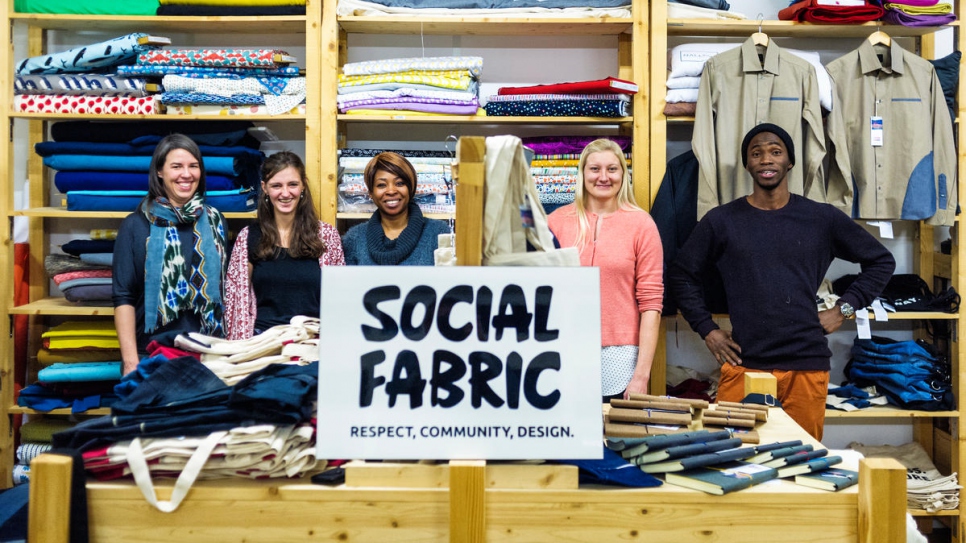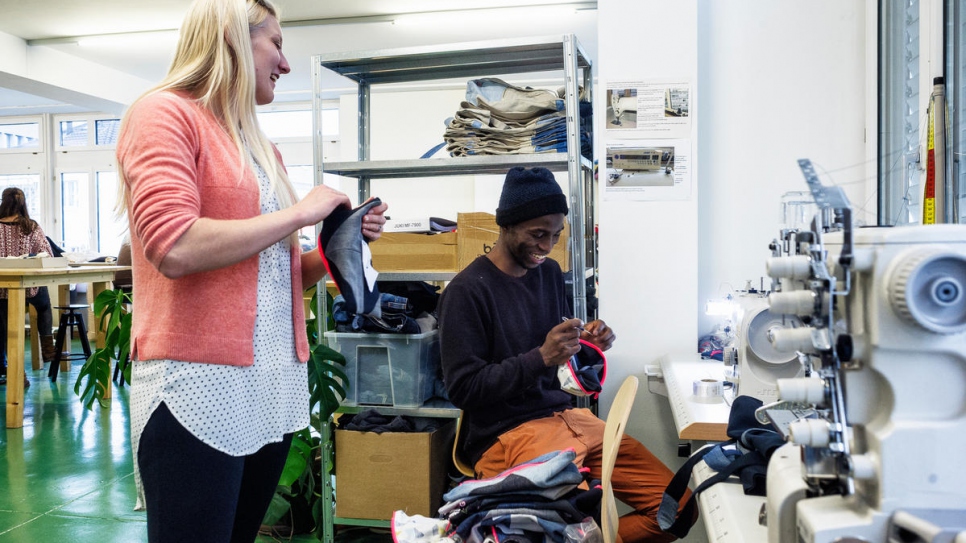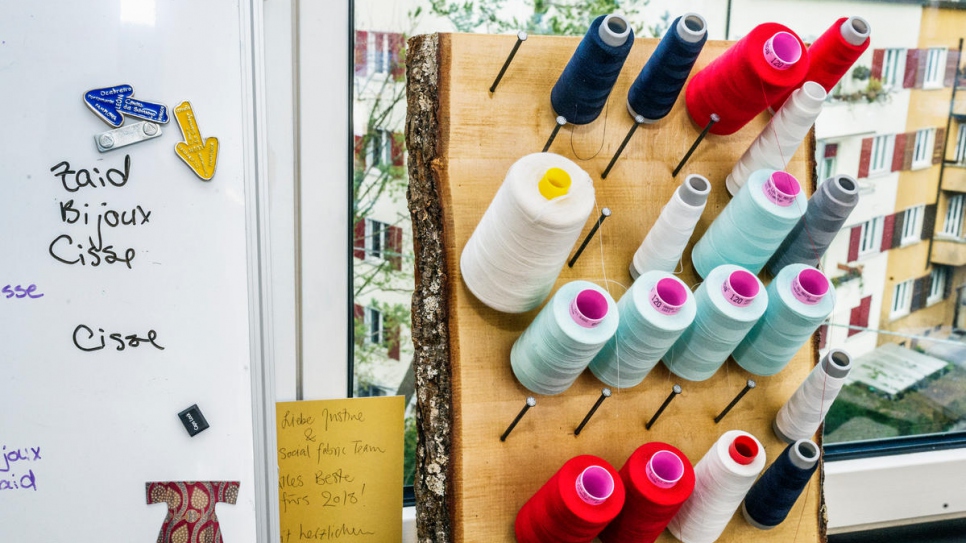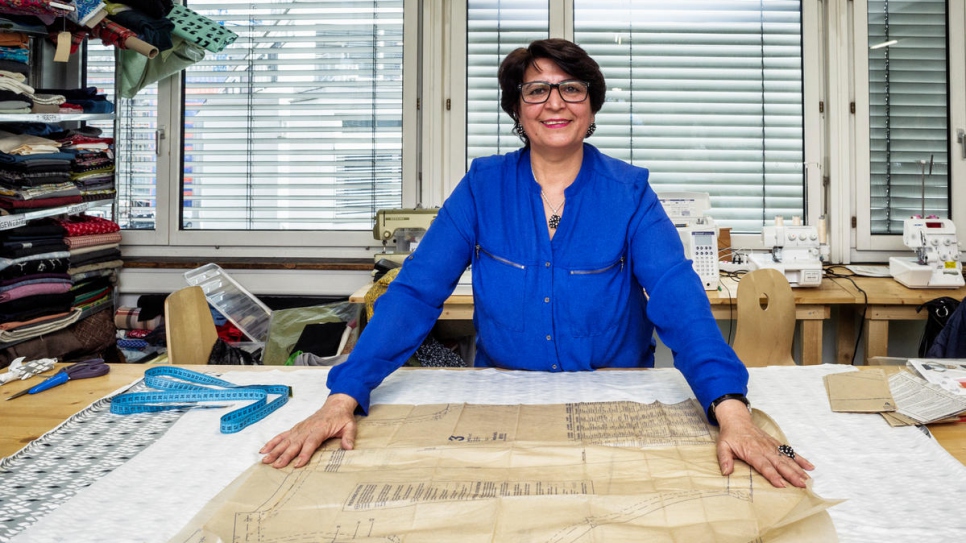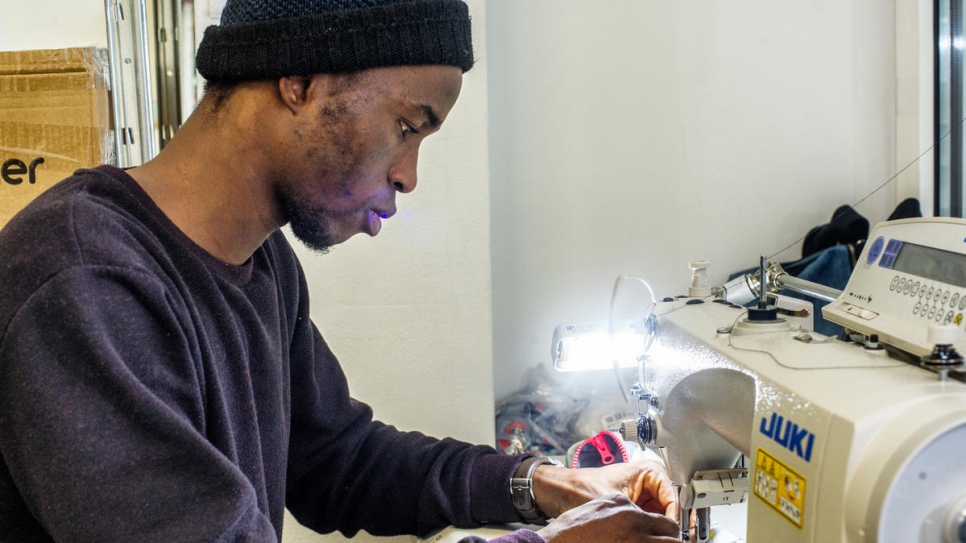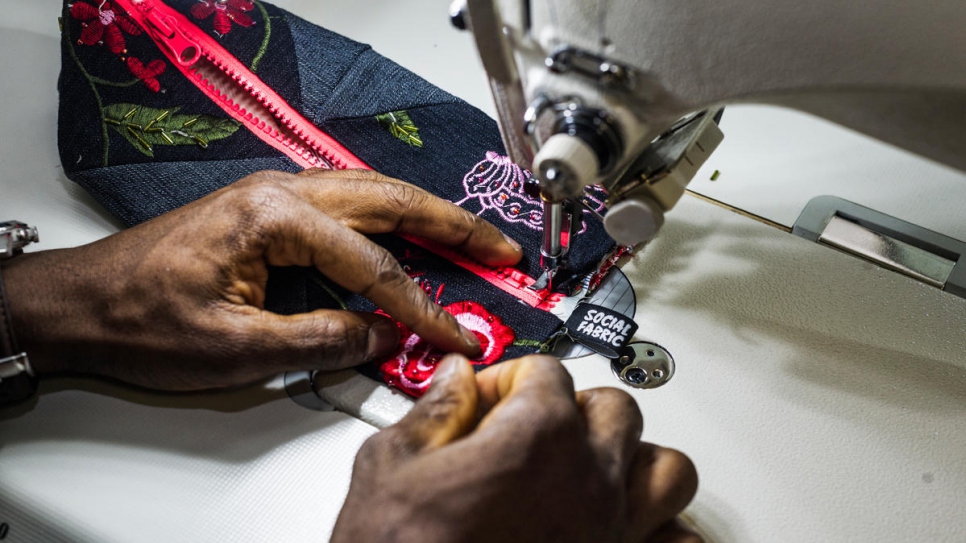Refugees pin hopes on new future at Swiss sewing workshop
The Zurich-based organization Social Fabric provides tailoring and dressmaking classes for refugees keen to acquire new skills.
Congolese refugee Bijoux worked as a seamstress in her home country and in South Africa. She designs for Social Fabric.
© UNHCR/Mark Henley
Among the colourful fabrics and sewing machines in a Zürich clothing workshop, Jamila leans across her workbench and carefully smooths the fabric of a black-and-yellow dress she is making, adjusting the hem and inserting pins here and there.
In a few days’ time she will put the finishing touches to the dress and take it home.
Two months ago, the 57-year-old Afghan refugee began attending sewing classes organized by Social Fabric, a Swiss organization based in Zürich. “I wanted to learn new skills and meet new people”, says Jamila, who fled her home in Afghanistan seven years ago.
Social Fabric was founded in 2015 by Heather Kirk, a Canadian molecular biologist who wanted to combine her knowledge of plant biology with sustainable development and social work.
Social Fabric is both a commercial company and a community-based organization. It pays members and volunteers to create and sell products, while reinvesting the income to cover overheads and fund programmes to help asylum-seekers and refugees integrate.
“In my country, we do these steps in the head.”
Every Thursday, up to 20 people from various countries, mostly but not all refugees and asylum seekers, attend Social Fabric’s sewing workshop. “Learning how to sew happens mainly through observation and imitation,” says Heather. “This allows refugees, who do not yet speak German very well, to participate actively in the workshops and to learn new skills”.
In 2016, Social Fabric launched a crowdfunding campaign to pay the salary of 26-year-old Cissé, a refugee from Côte d’Ivoire, who teaches tailoring.
He worked as a tailor for 11 years at home, but in Switzerland, he has had to adapt to new ways of working.
“Here, we use a lot of patterns and forms, and we spend a lot of time preparing our work by using pins,” he says. “In my country, we do these steps in the head. It is simpler and quick that way!”
Bijoux, 34, a refugee from the Democratic Republic of the Congo, worked as a seamstress in her home country and in South Africa. Bijoux moved to Switzerland in 2011 and quickly adapted to Swiss life. Thanks to Social Fabric, she also became part of a network of friends. “It was really difficult to be at home all day, with nothing to do”, she says.
“We want to exploit the creative potential of everyone.”
“For refugees who are getting their asylum request processed – a procedure that can sometimes last for years – it is very difficult to find work,” says Heather, adding that it is important to create spaces where they can undertake creative activities and meet people, be it other refugees or Swiss residents.
The business is doing well. In 2018, Social Fabric will launch a line of bags and scarves inspired by African prints. It has also created an online platform, Goodtee, so that young couturiers can benefit from the designs and prints designed by Cissé, Bijoux and Eritrean colleague Zaid.
Heather says the goal of Social Fabric is not just to help refugees. “We want to foster collaboration between refugees, locals, and internationals to exploit the creative potential of everyone.”

